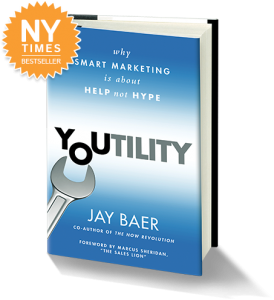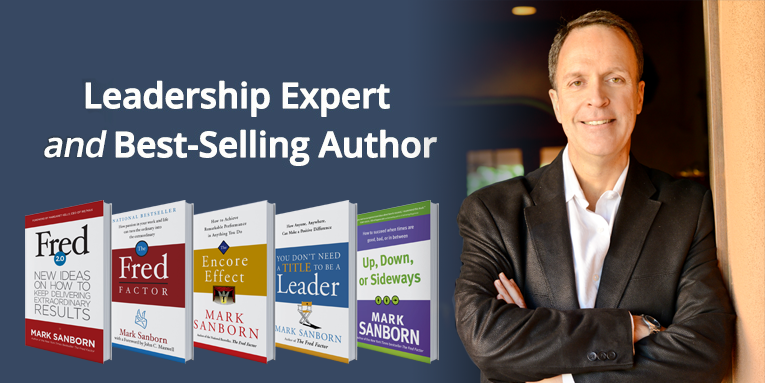Jay Baer is a new friend and a rock star in the world of social media and content marketing. His firm, Convince and Convert, is described as “social and content accelerators.” Jay and I have had stimulating conversations over great craft beer and I’ve enjoyed his latest book, Youtility: Why Smart Marketing is About Help not Hype. I asked him to share his insights with you.
Radical transparency is how leaders build loyalty
In 2013, the “Edelman Trust Barometer” found businesses were trusted by 58 percent of survey respondents globally. This is up from 53 percent in 2012. Put in a somewhat more strident context, this means that for every ten of the potential customers you’re trying to reach with your messages, more than four don’t trust you.
This is up from 53 percent in 2012. Put in a somewhat more strident context, this means that for every ten of the potential customers you’re trying to reach with your messages, more than four don’t trust you.
Those odds aren’t great but there’s a way for you to reach more clients and potential customers.
Trust has a huge impact on marketing success.
This lack of trust in businesses has been an issue for at least a decade. In the United States, 44 percent trusted business in 2001, and 45 percent in 2012. In other major economies that have marketing mechanics similar to America’s, the data is even more frightening, with the United Kingdom, France, and Germany trusting businesses at a 32 percent rate in 2001, and 31 percent in 2012.
If half of your potential customers (at best) are distrustful of your business, that’s a problem. Because trust matters. A lot. Edelman finds that when a company is distrusted, 57 percent of people will believe negative information after hearing it just one or two times. Conversely, when companies are trusted, 51 percent of people believe positive information about the company after hearing it just one or two times.
“Trust has never been more important as a corporate asset, and it needs to be managed for people to believe the information you’re putting out,” says Amy Treanor, executive vice president of Edelman Square, the division of the firm responsible for the Trust Barometer.
Companies of all sizes and types can and should take steps to buttress their trustworthiness, and in the most recent version of the research, Edelman published “The Six Building Blocks of Trust” to help clarify how trust can be built. They found that what might be considered the base elements of trust, such as financial performance and accountability, are merely table stakes in a much more nuanced game.
“To really be a trusted enterprise,” Treanor says, “you need to focus on the more societal and engagement activities: transparency, employee engagement, listening to your customers, and putting them ahead of profits.”
Radical Transparency Builds Trust
One of the fastest (and best) ways to build trust is – as Edelman acknowledges – to embrace transparency.
McDonald’s Canada embraces this opportunity with vigor. Launched in June 2012, their “Our Food, Your Questions” program invites any Canadian to ask any question whatsoever about McDonald’s food on their special website. To ask a question participants must connect with either Twitter or Facebook, providing greater visibility and a ripple-in-the-pond viral effect, as questions appear on the inquisitors’ social network. Within the first seven months 19,000 questions were asked, at a rate of as many as 450 per day. In that period more than 12,000 questions were answered. The program is only dedicated to McDonald’s food, so questions about nonfood topics are directed to other resources, and some questions are of course duplicates. But there’s no dodging the tough questions, and that’s the most amazing element of this program. McDonald’s Canada is addressing head-on the rumors about food quality and safety that have dogged the brand seemingly forever, accentuated in this real-time, veracity-challenged world where mistaken reports of celebrity deaths on Twitter are a seemingly daily occurrence.
As an example of the types of questions McDonald’s is going out of its way to address, take this zinger from Jani S. in Nova Scotia: “When you say 100 percent beef, do you mean the whole cow: the organs, snout, brain, kidneys, etc. or just the plain beef we buy at the grocer?”
The rules are changing
Whoa. Historically, companies would do whatever possible to put as much distance as possible between themselves and that line of inquiry. But the rules are changing. Here’s McDonald’s answer comprehensive, factual, and not laden with artificial marketing hype: “Hi Jani. We wouldn’t call it plain beef, but it sure is beef. We only use meat cut from the shoulder, chuck, brisket, rib eye, loin, and round. In fact, our beef supplier is Cargill, a name you might recognize. They’re the biggest supplier of beef in Canada.”
The benefit of radical transparency
This approach of question and answering has strategic advantages for all companies as they approach radical transparency. “If you can build the platform where you become the trusted expert, you can literally sell anything,” says Joe Pulizzi, founder of the Content Marketing Institute and author of Epic Content Marketing.
One major opportunity this centralized approach offers is an audience for Youtility. Youtility is marketing upside down. Instead of marketing that’s needed by companies, Youtility is marketing that’s wanted by customers. Youtility is massively useful information, provided for free, that creates long term trust and kinship between your company and your customers. Could McDonald’s Canada have created a big effort around e-mailed questions or built a new food-oriented call center, like the Butterball Turkey Talk Line? Sure, but those options don’t have the benefit of answering questions publicly.
Information provision is now a spectator sport, and McDonald’s not only understands this important trend, but has also built technology to capitalize on it.










the President of the U.S. needs to read this post